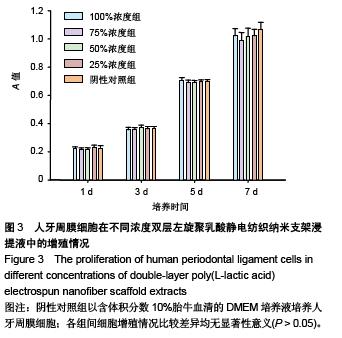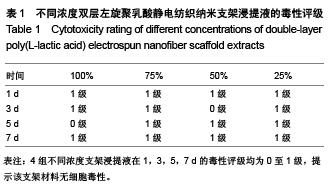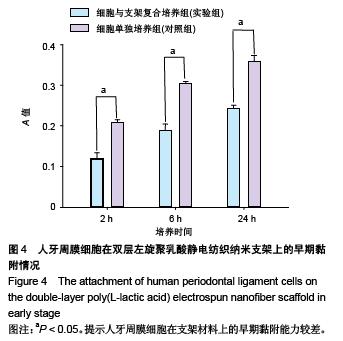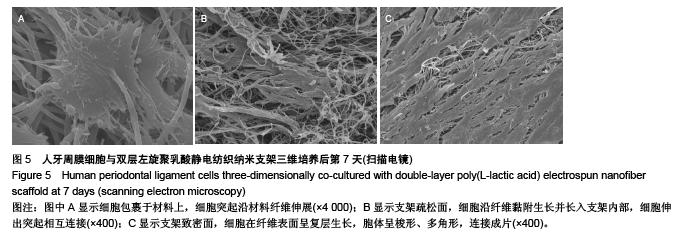| [1] Parihar AS,Katoch V,Raiguru SA,et al.Periodontal Disease: A Possible Risk-Factor for Adverse Pregnancy Outcom.J Int Oral Health.2015;7(7):137-142.
[2] Slots J.Periodontal herpesviruses: precalence, pathogenicity, systemic risk. Periodontol 2000.2015;69(1):28-46.
[3] Leszczynska A,Buczko P,Buczko W,et al.Periodontal pharmacotherapy-an updated review. Adv Med Sci.2011; 56(2): 123-131.
[4] Galler KM,D'Souza RN.Tissue engineering approaches for regenerative dentistry. Regen Med.2011;6(1):111-124.
[5] Ivanovski S,Vaquette C,Gronthos S,et al.Multiphasic scaffolds for periodontal tissue engineering.J Dent Res.2014;93(12): 1212-1221.
[6] 鲁红,田宇,吴织芬,等.牙周膜细胞松质骨基质支架复合移植促进牙周组织再生的研究[J]. 北京口腔医学,2012,20(4):185-189.
[7] Tian Y,Bai D,Guo W,et al.Comparsion of human dental follicle cells and human periodontal ligament cells for dentin tissue regeneration. Regen Med.2015;10(4): 461-179.
[8] 孙文娟,唐倩,黄南楠,等.双层胶原支架与人牙周膜细胞的体外生物相容性[J].中山大学学报:医学科学版,2014,35(2):250-255.
[9] Mitra, T,Sailakshmi G,Gnanamani A,et al.Preparation and characterization of malonic acid cross-linked chitosan and collagen 3D scaffolds: an approach on non-covalent interactions.J Mater Sci Mater Med.2012;23(5):1309-1321.
[10] Han P,Wu C,Chang J,et al.The cementogenic differentiation of periodontal ligament cells via the activation of Wnt/beta-catenin signalling pathway by Li+ ions released from bioactive scaffolds.Biomaterials.2012;33(27):6370-6379.
[11] Wu C,Zhou Y,Lin C,et al.Strontium-containing mesoporous bioactive glass scaffolds with improved osteogenic/ cementogenic differentiation of periodontal ligament cells for periodontal tissue engineering. Acta Biomater.2012; 8(10): 3805-3815.
[12] Chen FM,Jin Y.Periodontal tissue engineering and regeneration: current approaches and expanding opportunities.Tissue Eng Part B Rev.2010;16:219-255.
[13] Schofer MD,Roessler PP,Schaefer J,et al. Electrospun PLLA nanofiber scaffolds and their use in combination with BMP-2 for reconstruction of bone defects. PLoS One.2011;6(9):e25462.
[14] Zamparelli A,Zini N,Cattini L,et al.Growth on poly(L-lactic acid) porous scaffold preserves CD73 and CD90 immunophenotype markers of rat bone marrow mesenchymal stromal cells.J Mater Sci Mater Med.2014;25(10):2421-2436.
[15] 魏兴,王香梅,张志军,等.静电纺丝技术在聚乳酸改性及应用中的作用[J].山西化工,2012, 32(2): 26-30.
[16] Petrie Abrigo M,McArthur SL,Kingshott P,et al.Comparative effects of scaffold pore size, pore volume, and total void volume on cranial bone healing patterns using microsphere-based scaffolds.J Biomed Mater Res A.2009; 89(3):632-641.
[17] Ingavle GC,Leach JK.Advancements in electrospinning of polymeric nanofibrous scaffolds for tissue engineering.Tissue Eng Part B Rev.2014;20(4): 277-293.
[18] 张静,梅芳,蔡晴,等.牙周膜细胞在网格型与无纺型聚乳酸纳米纤维支架材料上体外培养的研究比较[J].中国生物医学工程学报, 2009,28(5):754-759.
[19] 邵正仁,颜玲,陈卡娜. 改性聚乳酸与Schwann细胞的生物相容性研究[J].蚌埠医学院学报,2009,34(9):753-755.
[20] Benatti BB,SHvefio KG,Cnsati MZ,et al.Physiological features of periodontal regeneration and approaches for periodontal tissue engineering using periodontal ligament cells. Biosci Bioeng.2007;103:1-6.
[21] Zhang C, Li J, Zhang L,et al.Effects of mechanical vibration on proliferation and osteogenic differentiation of human periodontal ligament stem cells.Arch Oral Biol. 2012;57(10): 1395-1407.
[22] Gottlw J,Nyman S,,Lindhe J, et al. New attachment formation in the human periodontium by guided tissue regeneration. Case reports. J Clin Peridontol. 1986; 13(6):604-616.
[23] Bottino MC,Thomas V.Membranes for Periodontal Regeneration-A Materials Perspective. Front Oral Biol.2015; 17:90-100.
[24] Slotte C, Asklöw B, Lundgren D.Surgical guided tissue regeneration treatment of advanced periodontal defects: a 5-year follow-up study. J Clin Periodontol.2007; 34(11): 977-984.
[25] Nygaard-Østby P,Bakke V,Nesdal O,et al.Periodontal healing following reconstructive surgery: effect of guided tissue regeneration using a bioresorbable barrier device when combined with autogenous bone grafting. A randomized- controlled trial 10-year follow-up.J Clin Periodontol. 2010; 37:366-373.
[26] Sculean A,Nikolidakis D,Schwarz F,et al.Regeneration of periodontal tissues: combinations of barrier membranes and grafting materials - biological foundation and preclinical evidence: a systematic review. J Clin Periodontol. 2008;35(8 Suppl): 106-116.
[27] Mopur JM,Devi TR,Ali SM, et al. Clinical and radiographic evaluation of regenerative potential of GTR membrane (Biomesh) along with alloplastic bone graft (Biograft) in the treatment of periodontal intrabony defects.J Contemp Dent Pract.2013;14(3): 434-439. |






.jpg)